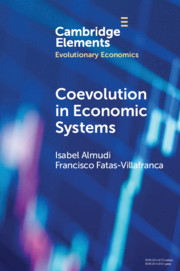Element contents
Coevolution in Economic Systems
Published online by Cambridge University Press: 12 May 2021
Summary
Keywords
- Type
- Element
- Information
- Online ISBN: 9781108767798Publisher: Cambridge University PressPrint publication: 10 June 2021
References
- 25
- Cited by

